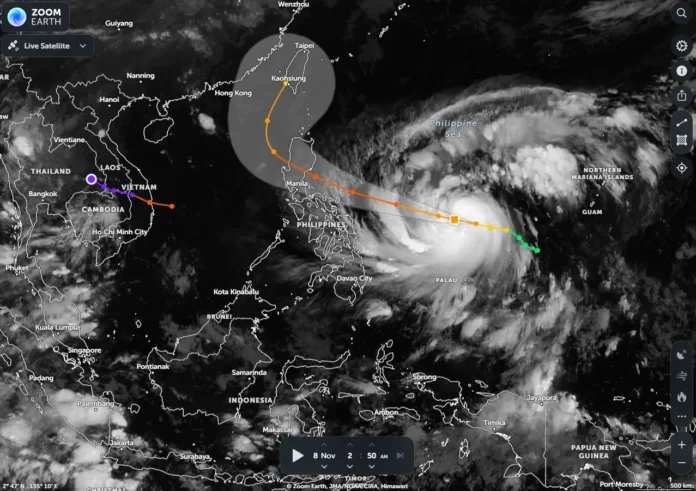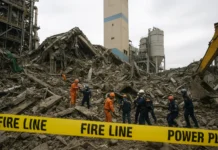
The Philippines sits in the Pacific Ring of Fire and the typhoon belt, facing around 20 tropical cyclones each year. Many typhoons spare communities with light rains, but some have brought devastation that redefined lives and revealed the enduring spirit of Filipinos.
This article highlights the top 10 most devastating typhoons in Philippine history, their impact, and lessons learned.
Summary of the Most Devastating Typhoons
| Rank | Typhoon Name | Year | Areas Affected | Casualties |
|---|---|---|---|---|
| 1 | Yolanda | 2013 | Eastern Visayas, Leyte, Samar | 6,300+ |
| 2 | Odette | 2021 | Visayas, Cebu, Bohol, Siargao | 409 |
| 3 | Pablo | 2012 | Mindanao, Compostela Valley | 1,901 |
| 4 | Glenda | 2014 | Luzon, Metro Manila, Bicol | 225 |
| 5 | Ompong | 2018 | Northern Luzon, Benguet, Itogon | 134 |
| 6 | Pepeng | 2009 | Northern Luzon, Pangasinan | 465 |
| 7 | Reming | 2006 | Bicol Region, Albay | 1,266 |
| 8 | Uring | 1991 | Ormoc City, Leyte | 5,081 |
| 9 | Frank | 2008 | Visayas, Panay Island, Iloilo | 938 |
| 10 | Tino | 2025 | Central Visayas, Cebu | 188 |
Typhoon Yolanda (Haiyan)
Regarded as the strongest typhoon to ever make landfall, storm surges up to 6 meters submerged entire communities in Tacloban City and Eastern Visayas. Winds reaching 315 km/h and storm surges up to 6 meters high submerged entire communities.
🌀 Impact: 6,300 lives lost, ₱95.5 billion in damages.Typhoon Odette (Rai)
Striking during the pandemic, Odette left Cebu, Bohol, and Siargao in ruins. Its intense winds and flooding displaced thousands right before Christmas.
🌀 Impact: 409 deaths, ₱51.8 billion in damages.Typhoon Pablo (Bopha)
Pablo hit Mindanao, an area rarely affected by such strong typhoons. Landslides buried villages, especially in the Compostela Valley.
🌀 Impact: 1,901 deaths, ₱43.2 billion in damages.Typhoon Glenda (Rammasun)
Glenda swept across Luzon, knocking out power in Metro Manila and destroying thousands of homes.
🌀 Impact: 225 deaths, ₱38.6 billion in losses.Typhoon Ompong (Mangkhut)
Ompong triggered massive landslides in Benguet and Itogon, where miners were buried alive.
🌀 Impact: 134 deaths, ₱33.9 billion in damages.Typhoon Pepeng (Parma)
Pepeng arrived weeks after Ondoy, worsening floods in Northern Luzon.
🌀 Impact: 465 deaths, ₱27.3 billion in damages.Typhoon Reming (Durian)
Known for lahar flows from Mayon Volcano, Reming buried entire towns in Albay.
🌀 Impact: 1,266 deaths, ₱5.1 billion in damages.Typhoon Uring (Thelma)
A tragic flash flood struck Ormoc City, claiming over 5,000 lives in just a few hours.
🌀 Impact: 5,081 deaths, ₱1.04 billion in losses.Typhoon Frank (Fengshen)
Frank flooded Panay Island and caused the sinking of the MV Princess of the Stars.
🌀 Impact: 938 deaths, ₱13.5 billion in damages.Typhoon Tino (Kalmaegi)
Tino caused massive flash floods and displaced families in Cebu and other parts of the Visayas, reminding Filipinos that even minor storms can disrupt lives.
🌀 Impact: 188 deaths, ₱950 million in damages.
The Bigger Picture
These typhoons highlight the urgent need for climate resilience, disaster preparedness, and sustainable infrastructure.
According to PAGASA and Climate.gov.ph, the Philippines is among the most climate-vulnerable nations, with stronger typhoons expected due to global warming.
Frequently Asked Questions (FAQ)
What is the strongest typhoon to hit the Philippines?
Typhoon Yolanda (Haiyan) in 2013 remains the strongest and deadliest.
What region experiences the most typhoons?
Eastern Visayas and the Bicol Region are vulnerable due to their geographic location, which faces the Pacific Ocean.
How can we prepare for typhoons?
Follow PAGASA advisories, prepare emergency kits, and secure homes before landfall.
Why are typhoons in the Philippines getting stronger?
Climate change contributes to rising ocean temperatures, which in turn lead to more intense storms.
What is the safest part of the Philippines from typhoons?
Southern Mindanao experiences fewer typhoons compared to northern regions.













